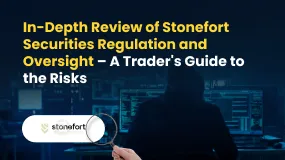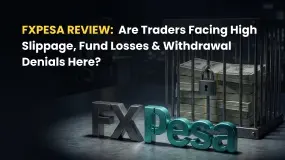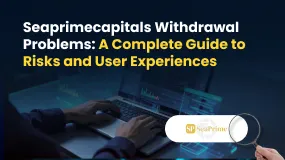简体中文
繁體中文
English
Pусский
日本語
ภาษาไทย
Tiếng Việt
Bahasa Indonesia
Español
हिन्दी
Filippiiniläinen
Français
Deutsch
Português
Türkçe
한국어
العربية
Solana Cashio Hack Loots $52.8M: Investigations Reveal Surprising Facts
Abstract:Crypto trading platform Bybit said that the hack drained $52.8 million worth of stablecoins including USDC, USDT and UST from Cashio and Saber.

Key Insights:
Solanas Cashio hack drained $52.8 million from the protocol.
To prevent, protocols should be properly and thoroughly audited.
Hacker left a message to return funds for accounts below 100K and donate the rest to charity.
Cashio (CASH), a native stablecoin of Solana, recently lost millions after hackers exploited an “infinite mint glitch.” The attackers drained a staggering $52.8 million from the protocol, following which the CASH stablecoin collapsed from $1 to $0.00005, which left the entire decentralized finance (DeFi) ecosystem appalled.
Initially, it was reported that Cashios protocol exploited cryptos equaling about $28 million. According to a security researcher Samczsun, the project lost around $50 million (based on quick skimming).

With these estimates aside, crypto trading platform Bybit came up with a fresh investigation on the hack, discovering precisely $52.8 million of stolen funds.
“The exploited amount also far exceeded what most other publications reported. To elucidate, most publications who reported on this exploit seem to think that $28 million was drained from this hack,” the Bybit readings noted.
As a quick recap, CASH, the dollar-pegged stablecoin, is minted by depositing stable pair liquidity provider tokens (LP tokens), in this case, USDT and USDC pair in a 50:50 ratio on Solanas decentralized exchange – Saber.
What Actually Happened? A to Z of the Hack
FXEmpire spoke to a team from Bybit comprising Derek Lim, head of crypto insights, Gabriel Foo, senior research analyst and Fathur Rahman, COO of SolanaFM, on the alarming exploit. Per their findings, the hacker first managed to mint “two billion CASH tokens” by using the perpetrators unknown tokens. But, how is this possible?
Furthermore, the hacker burnt part of the newly minted CASH tokens (2 billion) for the Saber USDT-USDC LP tokens. The hacker then swapped the LP pair tokens for $16.4 million USDC and $10.8 million USDT.
The Bybit investigations further found that the remaining CASH tokens were swapped out for $8.6 million UST and $17 million USDC through Saber. Finally, the hacker swapped $15.3 million in USDC and USDT after draining $52.8 million.
The hacker used the Jupiter liquidity aggregator on Solana to transfer the funds in 3 transactions to an Ethereum address through the Wormhole Bridge.
How To Prevent such Hacks? Possible Solutions
This isnt the first time a DeFi protocol has been looted for millions; however, this is the first of its kind “infinite mint” glitch. Every time after an attack, HODLers are warned to keep their tokens safe.
To prevent such acts, the team suggested the protocols to ensure that they have been properly and thoroughly audited. He said that DApps should adopt certain Tradfi structures and those of the big tech companies. Talking to FXEmpire,
“In other words, a more stringent auditing process should be initiated.”
This can be achieved by mandatory tests on the devnet for internal checks, during the development phase of any DApps. Furthermore, once the team is ready to stage the product after all internal checks, audit companies and tech alfa groups must step in to clear any bugs, edge cases, etc.
When the beta version is ready, more experts should be brought in to do a final check before the apps roll-out. Team consisting Foo and Rahman added,

Disclaimer:
The views in this article only represent the author's personal views, and do not constitute investment advice on this platform. This platform does not guarantee the accuracy, completeness and timeliness of the information in the article, and will not be liable for any loss caused by the use of or reliance on the information in the article.
Read more

In-Depth Uniglobe Markets Commission Fees and Spreads Analysis – What Traders Should Really Know
For experienced traders, the cost of execution is a critical factor in broker selection. Low spreads, fair commissions, and transparent pricing can be the difference between a profitable and a losing strategy over the long term. This has led many to scrutinize the offerings of brokers like Uniglobe Markets, which presents a tiered account structure promising competitive conditions. However, a professional evaluation demands more than a surface-level look at marketing claims. It requires a deep, data-driven analysis of the real trading costs, set against the backdrop of the broker's operational integrity and safety. This comprehensive Uniglobe Markets commission fees and spreads analysis will deconstruct the broker's pricing model, examining its account types, typical spreads, commission policies, and potential ancillary costs. Using data primarily sourced from the global broker inquiry platform WikiFX, we will provide a clear-eyed view of the Uniglobe Markets spreads commissions prici

In-Depth Review of Stonefort Securities Regulation and Oversight – A Trader's Guide to the Risks
For experienced traders, the process of selecting a new broker transcends a simple comparison of spreads and leverage. It is a meticulous due diligence exercise where the integrity of the broker's regulatory framework is paramount. Stonefort Securities, a relatively new entrant in the crowded brokerage space, presents a complex and often contradictory profile. On one hand, it boasts a modern MT5 platform and a stream of positive user testimonials. On the other hand, it is shadowed by severe regulatory warnings that question the very foundation of its operations. This in-depth review focuses on the core issue for any long-term trader: Stonefort Securities regulation and oversight. We will dissect the broker's corporate structure, scrutinize its licensing claims, and analyze what the data implies for trader protection and fund security. For traders evaluating whether Stonefort Securities is a trustworthy partner, understanding these details is not just important—it is essential.

FXPesa Review: Are Traders Facing High Slippage, Fund Losses & Withdrawal Denials?
Do FXPesa support officials fail to pick up your calls when you raise fund withdrawal requests with the broker? But are these officials always open to you regarding fund deposits? Do you frequently spot slippage and stop-loss order execution errors on the FXPesa login? These issues are increasingly becoming common with this forex broker. Consequently, many traders have expressed their dissatisfaction with the broker online. In this FXPesa Review article, we have shared some of these complaints. Take a look!

Seaprimecapitals Withdrawal Problems: A Complete Guide to Risks and User Experiences
Worries about Seaprimecapitals withdrawal problems and possible Seaprimecapitals withdrawal delay are important for any trader. Being able to get your money quickly and reliably is the foundation of trust between a trader and their broker. When questions come up about this basic process, it's important to look into what's causing them. This guide will tackle these concerns head-on, giving you a clear, fact-based look at Seaprimecapitals' withdrawal processes, user experiences, and trading conditions. Most importantly, we'll connect these real-world issues to the single most important factor behind them: whether the broker is properly regulated. Understanding this connection is key to figuring out the real risk to your capital and making a smart decision.
WikiFX Broker
Latest News
In-Depth Uniglobe Markets Commission Fees and Spreads Analysis – What Traders Should Really Know
WikiFX's New Evaluation of ATM Capital LTD: Does its License Protect the Arab Investor?
Is Axi Legit? A Data-Driven Analysis of Its Regulatory Standing and Trader Feedback
How a Fake Moomoo Ad Led to the “New Dream Voyage 5” Scam
FXPesa Review: Are Traders Facing High Slippage, Fund Losses & Withdrawal Denials?
Trive Investigation: High Score, Hidden Risk - The Profit Paradox
CMC Markets Australia Revenue Surges 34%, But High-Net-Worth Clients Face Tax Phishing Threat
Bessent believes there won't be a recession in 2026 but says some sectors are challenged
Young Singaporean Trader Grew USD 52 into a USD 107,700 Portfolio
Is GGCC Legit? A Data-Driven Analysis for Experienced Traders
Currency Calculator



